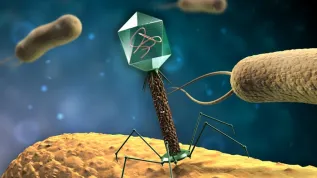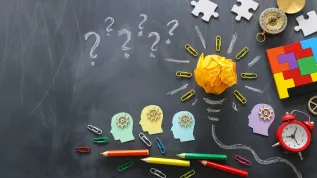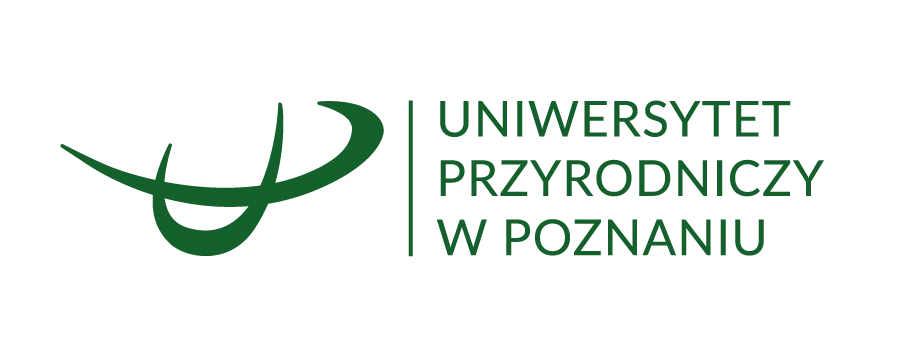
Radiologists are less susceptible to visual illusions than other people. This is the result of practice, during which they develop the ability to focus on specific areas of interest and ignore other elements that create the illusion, scientists from the UK show.
'Until now, the consensus was that would rather be impossible to develop your visual perception to make it resistant to optical illusions', says Radosław Wincza, PhD from the University of Central Lancashire, first author of the paper published in "Scientific Reports".
Usually, studies on specialised perception have focused on chess players and radiologists. Although the visual perception of specialists from these groups is different, there are many similarities between them. For example, they can detect potential changes in human tissues or predict the order of chess moves, which results from memorising thousands of scans and chess games.
'However, in experiments in which they were asked to find something that was not related to their area of expertise - they did not perform any better than others. It was therefore assumed that visual perception of radiologists and chess players occurs only within their specialisation and does not transfer to other tasks', Radosław Wincza explains in an interview with PAP.
Meanwhile, British scientists from Lancaster University, University of Central Lancashire, University of East Anglia and Cumbria University have tested the susceptibility of radiologists to popular visual illusions. The subjects answered questions related to optical illusions. They included assessing the size of circles (Ebbinghaus illusion), visual assessment of the length of segments (Ponzo illusion and Müller-Lyer illusion) and assessing the shapes of the same tables differently arranged in the image (Shepard Tabletops illusion).
The study involved 44 radiologists and a control group consisting of 107 psychology and medicine students.
The results showed that medical imaging experts were significantly less susceptible to all illusions except the last one, the Shepard Tabletops illusion. The effect was particularly noticeable in the case of the Ebbinghaus illusion.
The radiology students performed similarly to the psychology students. It therefore seems unlikely that the differences in susceptibility to illusions are the result of innate visual abilities. These abilities most likely develop with practice.
As we read in the publication, these data are the first to demonstrate that professional visual expertise may induce changes in visual perception that extend beyond a specific domain.
'Radiologists have tunnel vision; they look as if we were shining a flashlight, and thanks to this, they only see a certain part of the reality around us. Radiologists +shine a light+ on the places that they need to assess, and ignore everything around those places. This is what their specialised perception is all about. This was brilliantly demonstrated in a study in which a photo of a gorilla was inserted into an X-ray image. Most radiologists participating in that experiment did not notice it at all', describes the author of the publication in Scientific Reports.
In his opinion, the current study shows two key skills of radiologists: the ability to focus on detail - and to ignore those visual elements that create the illusion.
'In three out of four illusions we had elements that caused this illusion, i.e. circles, arrows, lines - due to which it seems to us that there is depth where in reality is none. In the Shepard Tabletops illusion there were no such elements. In this case, radiologists performed the same as people without radiological experience', the researcher points out.
In turn, the Ebbinghaus illusion, in which the effect was most visible, concerns the perception of size, and radiologists regularly have to assess the sizes of image features. These are often objective measurements, such as the diameter of blood vessels, the diameter of a tumour, the size of a stroke in a brain scan. The ability to ignore irrelevant context is crucial for the effective interpretation of medical images.
'You could say that radiologists perceive the world more objectively, because they are not susceptible to visual illusions. In reality, they are also susceptible to them, but to a much lesser extent than others. We also know that this effect appears relatively quickly in their case', Radosław Wincza describes.
Researchers from Lancaster University are currently testing whether such 'hawk eye' training translates into diagnostic accuracy, i.e. detection of tissue abnormalities.
'Among radiologists, as in every profession, there are good and worse specialists. However, radiologists' errors are valued at huge amounts of money per year, and they can be associated with human dramas', Wincza adds. 'Currently, nowhere in the world are radiologists are recruited based on their visual perception skills. We hope that it may be possible to reach a stage where at some point in their careers, radiologists would be assessed based on their visual skills, which would then translate into better diagnostics', he says.
This requires more years of research. 'For now, when asked how to learn not to succumb to visual illusions, we answer: in the UK, you only have to spend five years studying medicine and then seven more years to become a radiologist', he says.
ekr/ zan/ jpn/













